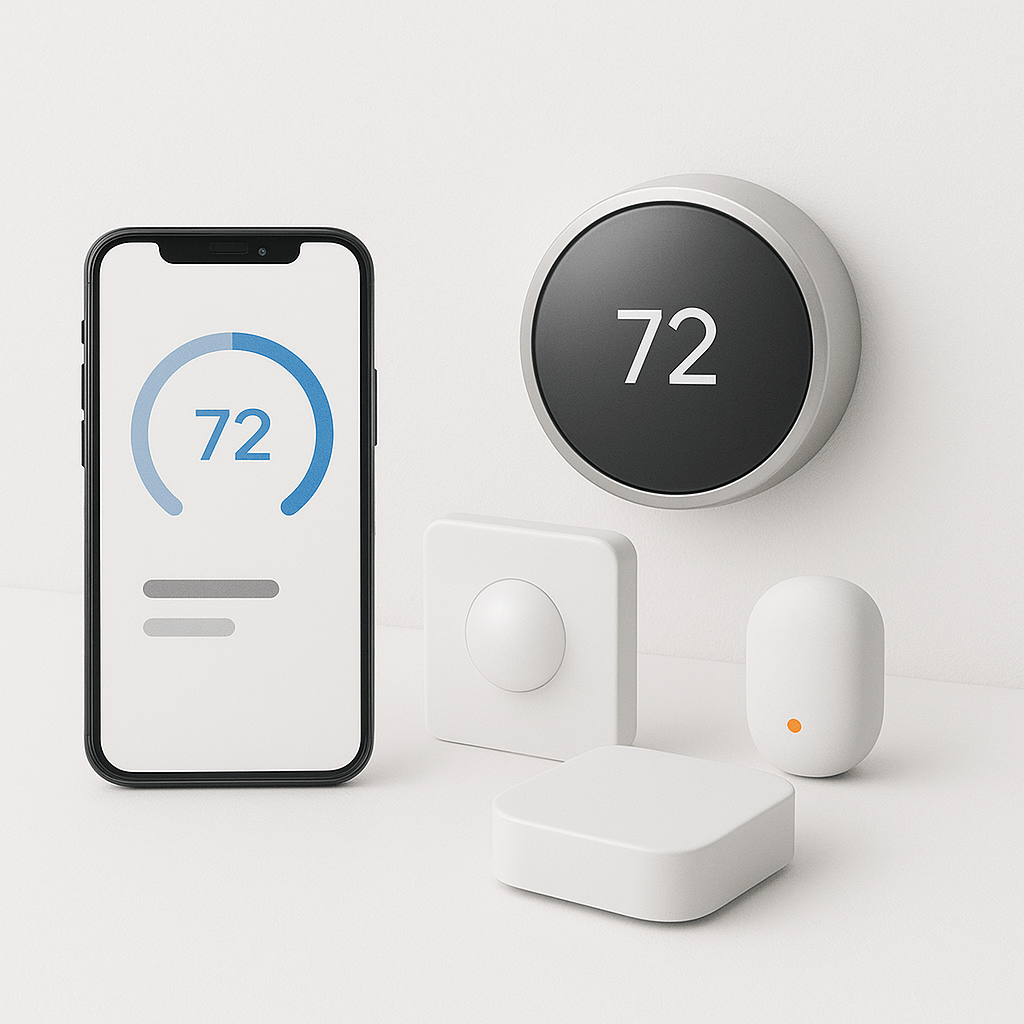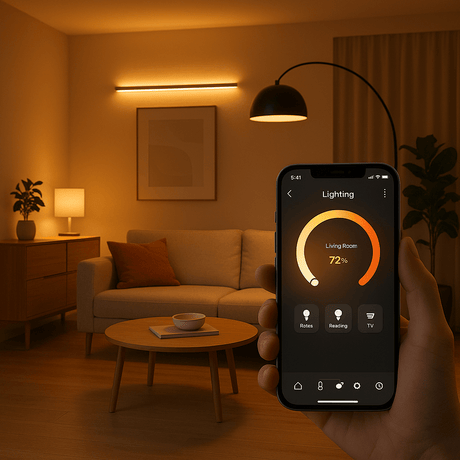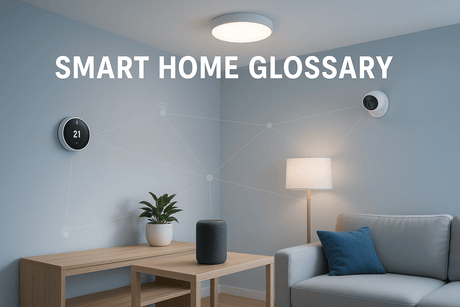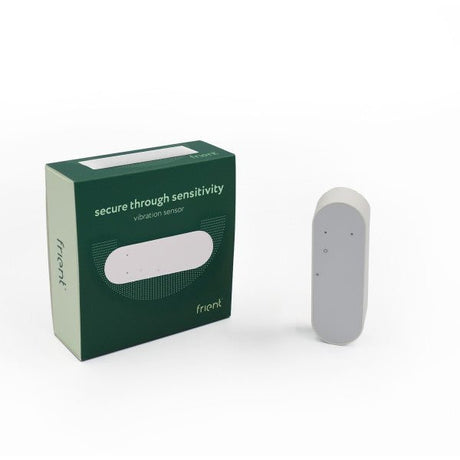Heating and cooling typically represent the largest slice of a household's energy budget. For decades, managing home temperature involved manual adjustments or relying on basic programmable thermostats with rigid schedules. Enter the smart thermostat – a sophisticated, connected device poised to revolutionize how we manage climate control. Offering intelligent scheduling, remote access, and integration capabilities, these devices promise not only enhanced comfort but also significant energy savings, making them a cornerstone investment for any modern, efficient smart home.
But beyond the marketing buzz, how exactly do these devices deliver on their promises? What tangible benefits do they offer over their predecessors? Let's delve into the seven primary ways smart thermostats contribute to a more comfortable and energy-efficient home environment.

1. Adaptive Scheduling and Intelligent Learning
Traditional programmable thermostats require users to manually input fixed schedules for temperature changes throughout the day and week. While better than manual control, these schedules often fail to account for the dynamic nature of real life – unexpected late nights at work, spontaneous weekend trips, or simply variations in daily routines.
Smart thermostats elevate scheduling to an art form through adaptive learning. Many models observe your manual adjustments over an initial period (typically a week or two) and learn your household's patterns: when people usually wake up, leave for work or school, return home, and go to sleep. They also note your preferred temperatures during these different periods.
- How it Saves Energy: Based on this learned behaviour, the thermostat automatically creates and refines an optimized heating and cooling schedule. It proactively lowers the temperature setpoint (in winter) or raises it (in summer) during predictable away times or overnight, minimizing the energy spent conditioning an empty or sleeping house. Unlike rigid schedules, if your routine changes slightly, the thermostat can adapt over time, continuously optimizing for efficiency without requiring constant manual reprogramming. This intelligent adaptation prevents the significant energy waste associated with heating or cooling unnecessarily.
- How it Improves Comfort: The learning capability also enhances comfort. The thermostat anticipates your return or wake-up time and begins adjusting the temperature before that moment, ensuring your home reaches your desired level of warmth or coolness precisely when you need it. This eliminates the uncomfortable experience of arriving home to a freezing house in winter or a sweltering one in summer and waiting for the system to catch up.
-
Beyond Basic Learning: Some advanced models even factor in how long it typically takes your specific home and HVAC system to reach a target temperature, further refining the pre-heating or pre-cooling start times for maximum efficiency and comfort.

2. Remote Control and Anytime, Anywhere Monitoring
Perhaps the most widely recognized benefit is the ability to control and monitor your smart thermostat from virtually anywhere using a dedicated smartphone app, tablet, or web browser.
- How it Saves Energy: This remote access is a powerful tool for energy savings. Did you rush out for a weekend trip and forget to set the thermostat to vacation mode? No problem – adjust it from the airport. Are you stuck in traffic and know you'll be home hours later than planned? Delay the scheduled temperature increase remotely. This ability to make real-time adjustments based on unforeseen circumstances prevents significant energy waste.
- How it Improves Comfort: The comfort benefits are equally compelling. Heading home early on a particularly frigid or scorching day? Use the app to pre-condition your home so it's perfectly comfortable the moment you walk in the door. You can also remotely monitor the temperature while away, providing peace of mind for pet owners or ensuring that temperatures don't drop low enough to risk frozen pipes during a winter getaway.
-
Multi-User Access: Most platforms allow multiple family members to have app access, enabling shared control and monitoring.

3. Geofencing: Automated Home/Away Awareness
Geofencing takes remote control a step further by automating the home/away status based on your physical location, typically determined by your smartphone's GPS.
You define a virtual boundary (a
"geofence") around your home using the thermostat's app. When the app detects that all registered smartphones associated with the household have left this boundary, it automatically signals the thermostat to switch to an energy-saving "Away" mode. Conversely, when the first person re-enters the geofence, the thermostat automatically resumes the scheduled or preferred "Home" comfort settings.
- How it Saves Energy: Geofencing provides a seamless, automated way to ensure energy isn't wasted heating or cooling an empty home, even for short, unplanned trips out. It eliminates the need to remember to manually adjust the thermostat every time you leave and return.
- How it Improves Comfort: Like adaptive scheduling, it ensures your home is comfortable upon your arrival without requiring manual intervention or relying solely on a fixed schedule that might not match your actual movements.
-
Privacy Considerations: Users should be aware that geofencing relies on location services on their smartphones. Most platforms offer settings to manage privacy and control which users' locations trigger the home/away status.

4. Integration with Other Smart Devices (Sensors, TRVs, etc.)
A truly smart thermostat doesn't operate in a vacuum. Its real power is often unlocked through integration with other smart home devices, creating a more responsive and efficient ecosystem, primarily using robust protocols like Z-Wave and Zigbee.
-
Integration with Smart TRVs (Thermostatic Radiator Valves): This is particularly impactful for homes with radiator-based heating systems. Smart TRVs (Thermostatic Radiator Valves) replace the manual valves on individual radiators. When integrated with a smart thermostat or hub, they allow for precise room-by-room temperature control. Instead of heating the entire house based on the thermostat's single location, you can set different schedules and temperatures for each room (e.g., keeping bedrooms cooler during the day, heating only the living room in the evening). This zoning capability drastically reduces energy waste by avoiding heating unoccupied rooms.
-
Integration with Remote Temperature/Humidity Sensors: A thermostat can only measure the temperature at its specific location. Placing wireless temperature and humidity sensors (Temperature Sensors) in other important rooms (like a nursery, bedroom, or home office) allows the thermostat to average readings or prioritize maintaining the desired temperature in a specific occupied room, rather than just the hallway where the thermostat might be mounted. This leads to more consistent comfort throughout the house.
-
Integration with Door/Window Sensors: The system can be configured so that if a door or window (Door Sensors) is left open for a certain period, the heating or cooling is automatically paused in that zone or house-wide to prevent energy waste. It can resume once the window/door is closed.
-
Integration with Motion Sensors: Automations can be created to adjust heating in specific rooms based on occupancy detected by motion sensors (Motion Sensors), further optimizing zoned heating systems.
- Integration with Ceiling Fans or Smart Vents: In forced-air systems, integration can help circulate air more effectively or adjust airflow to specific rooms based on occupancy or temperature readings.
- How it Saves Energy: Zoned heating/cooling with TRVs, automatic adjustments based on open windows, and occupancy-based heating are major energy savers, targeting conditioning only where and when it's needed.
- How it Improves Comfort: Room-specific temperature control caters to individual preferences and ensures comfort in the most frequently used areas. Addressing temperature imbalances across different rooms becomes much easier.
5. Detailed Energy Usage Reports and Actionable Insights
Knowledge is power, especially when it comes to energy consumption. Most smart thermostat platforms provide detailed historical data and reports on your heating and cooling usage, typically accessible via the smartphone app or a web portal.
- How it Saves Energy: These reports go beyond simple usage numbers. They often show how many hours your system ran each day, how your usage compares to previous periods or similar homes, and sometimes even estimate cost savings based on your adjustments. Visualizing this data helps you understand exactly where your energy is going. You can see the direct impact of lowering the temperature by a degree or adjusting your schedule, empowering you to identify patterns, pinpoint inefficiencies, and make more informed decisions to further optimize settings for savings.
- How it Improves Comfort: While primarily focused on savings, analyzing usage patterns can also reveal insights into comfort. For instance, if the system runs constantly during certain periods without reaching the setpoint, it might indicate issues like poor insulation or an undersized HVAC system, prompting further investigation for long-term comfort improvements.
-
Gamification and Tips: Some platforms offer monthly summaries, comparisons, and even personalized tips for further savings, encouraging ongoing engagement with energy efficiency.

6. Responding to External Factors (Weather, Utility Programs, Time-of-Use Rates)
Advanced smart thermostats can leverage external data sources to make even smarter decisions.
- Weather Adaptation: By accessing local weather forecasts, the thermostat can anticipate upcoming heatwaves or cold snaps. It might pre-cool your home slightly before the hottest part of the day when energy demand (and potentially cost) is lower, or pre-heat more gradually before a cold front arrives, potentially using the system more efficiently than reacting suddenly to drastic temperature changes.
-
Demand-Response Programs: Many utility companies offer programs where customers voluntarily allow the utility to make small, brief adjustments to their thermostat settings during peak energy demand events (e.g., hot summer afternoons). Smart thermostats can automate participation in these programs. In return, customers often receive bill credits or reduced rates. This helps stabilize the energy grid and reduces the need for utilities to rely on expensive and less environmentally friendly
"peaker" power plants.
- Time-of-Use (TOU) Rate Optimization: In areas with TOU electricity pricing (where electricity costs more during peak hours), some smart thermostats can be programmed or learn to pre-cool/pre-heat during cheaper off-peak hours and minimize HVAC usage during expensive peak periods, directly reducing energy bills.
- How it Saves Energy: Weather adaptation optimizes system runtime. Demand-response participation directly earns credits/savings. TOU optimization shifts energy usage to cheaper times.
-
How it Improves Comfort: Weather adaptation leads to more stable indoor temperatures. Demand-response adjustments are typically minor and brief, often unnoticeable, while still contributing to grid stability.

7. Voice Control Integration: Effortless Adjustments
The integration of smart thermostats with popular voice assistants like Amazon Alexa, Google Assistant, and Apple Siri/HomeKit adds a significant layer of convenience and accessibility.
- How it Saves Energy: While the energy saving is indirect, the sheer ease of making quick, hands-free temperature adjustments encourages more frequent optimization. Instead of leaving the temperature slightly too high or low because adjusting it requires finding a phone or walking to the thermostat, users are more likely to make small, energy-saving tweaks using simple voice commands (e.g., "Hey Google, lower the thermostat by 1 degree"). This reduces the friction associated with fine-tuning comfort levels, leading to cumulative savings over time.
- How it Improves Comfort: Voice control offers unparalleled convenience. Adjusting the temperature while cooking, reading, or resting in bed becomes effortless. It also improves accessibility for individuals with mobility limitations.
-
Beyond Temperature: Voice commands can often be used to switch modes (heating/cooling/off), inquire about the current temperature, or even activate preset scenes that include thermostat adjustments.

Maximizing Benefits: Installation and Compatibility
To fully leverage these benefits, proper installation and system compatibility are key:
- Correct Wiring: Smart thermostats often require a C-wire (common wire) for continuous power. Ensure your HVAC system wiring is compatible or use an adapter if necessary. Incorrect wiring can lead to malfunction or damage.
- Optimal Placement: Install the thermostat in a central location away from direct sunlight, drafts, or heat sources for accurate temperature readings.
- HVAC System Compatibility: Verify that the smart thermostat model you choose is compatible with your specific heating and cooling system type (e.g., furnace, heat pump, boiler, multi-stage systems, underfloor heating).
-
Hub and Protocol Synergy: For integrations (TRVs, sensors), ensure all devices use compatible protocols (Z-Wave, Zigbee) and are supported by your chosen smart home hub (Hubs & Gateways).
Choosing Your Smart Heating Solution at Vesternet
Smart thermostats represent a significant upgrade from traditional climate control, offering a powerful blend of energy savings, enhanced comfort, and modern convenience. By understanding how features like adaptive learning, remote control, geofencing, device integration, energy reporting, external data response, and voice control work together, you can make an informed decision.
When selecting your system, carefully consider your specific needs, your home's heating/cooling setup, and your desired level of automation and integration.
Explore Vesternet’s curated selection of reliable smart heating components:
-
Smart Thermostats: Find central control units compatible with various systems and smart home platforms.
-
Smart TRVs: Enable precise room-by-room temperature control for radiator systems.
-
Compatible Sensors: Enhance accuracy and enable advanced automations with temperature, humidity, door/window, and motion sensors.
Investing in a well-chosen smart thermostat system, potentially augmented by TRVs and sensors, is not just about technology; it's about creating a more comfortable, efficient, and responsive home environment that adapts to your life while reducing your energy footprint and saving you money in the long run.


























